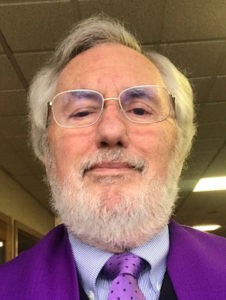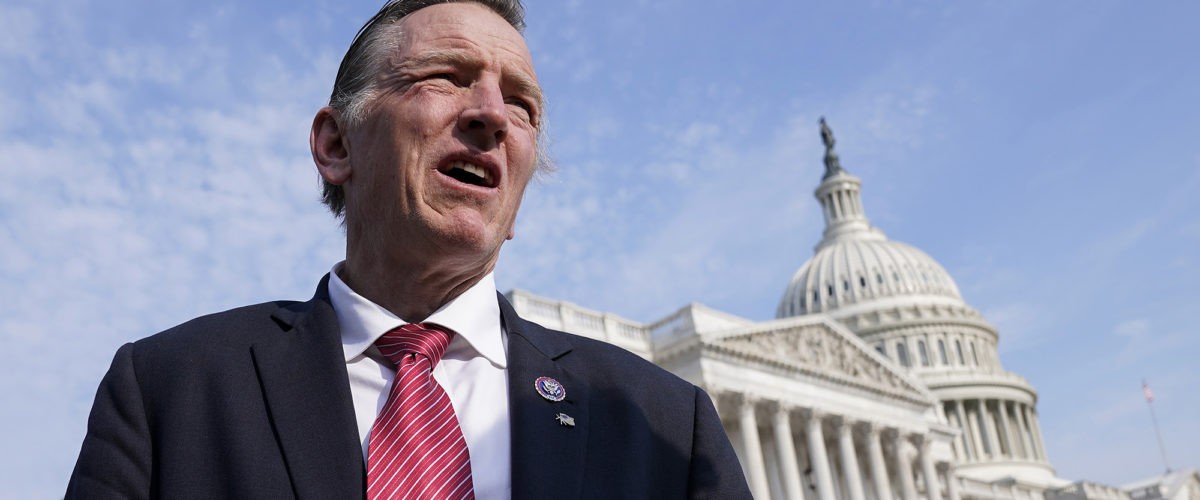Words have wings and fly where they please. Words provide unconscious but sometimes deadly after-effects the speaker can’t control.
Most recently, Congress has censured Rep. Paul Gosar, R-Ariz., for his depiction of violent acts against other members of Congress and the president of the United States in one of his tweets. Gosar defended his depiction of violence by insisting it was not, in fact, violent, but that those who censured him were the ones inciting violence. And after being censured, he tweeted the objectionable material again.
Even if he genuinely believes his intention was not to incite violence, once the video became public and became a piece of “media,” he no longer was in charge of whether viewers saw the tweet as violent. He doesn’t have the ability to judge how his video will be received by others.
“Words have wings and fly where they please.”
Communication is not a matter of saying or depicting something and then, after the fact, claiming you didn’t say or do what others are saying about your communication. His violent depiction became another ceaseless drop of toxic water into the once clear stream of American democracy.
The violence of rhetoric has become a major component in our toxic political and religious culture — especially since the Jan. 6 riot at the U.S. Capitol.
The primary argument is that as the cultural war intensifies, culture weaponizes language with increasingly violent rhetoric that encourages, facilitates and, yes, even causes acts of physical violence.
Consider a basic model of communication. A speaker utters a message. The message enters the atmosphere, where it encounters noise or interference. This noise now operates at maximum decibels. The message undergoes all kinds of pressure. The message then arrives at the listener or viewer. The listener provides feedback, and that feedback becomes the meaning of the message.
This means the speaker can’t control the message. This happens with violent rhetoric which is then denied by people like Gosar.
We see this in other ways from all kinds of other people and media sources.
Television producers often have defended their violence-soaked programming by insisting they are mere mirrors of cultural reality. They are not inciting viewers to violence. This is the same argument now coming from Facebook. It is the same argument that former President Donald Trump consistently used when he was accused of violent rhetoric.
There is scientific evidence to refute these attempts of avoiding accountability. The American Academy of Child and Adolescent Psychiatry reports, “There have been hundreds of studies of the impact of violence on children.” These studies have concluded that children:
- Become “immune” or numb to the horror of violence.
- Begin to accept violence as a way to solve problems.
- Imitate the violence they observe on television.
- Identify with certain characters, victims or victimizers.
The producers of the violence depicted on television insist that the images are innocent, that violence in real life is not a result of their images and messages. Yet we know that a single violent video can increase aggressiveness in children. The impact of violence may show up immediately or it may manifest itself years later.
This argument mirrors the current debate about the nature of political rhetoric.
Agents of communication, therefore, have an ethical responsibility to ensure that messages do not suggest violence. This suggests that critics of Rep. Gosar’s tweet have a rhetorical responsibility to investigate his character, his meta-messages and whether or not he is supporting violence.
“What is at stake here is the idea that rhetoric (including tweets and video content) can itself be violent.”
What is at stake here is the idea that rhetoric (including tweets and video content) can itself be violent. Defenders such as former President Trump go to great lengths to deny that their rhetoric has any association with violence. Both Trump and Gosar insist they have offered harmless metaphors intended to communicate strong opposition to their political opponents.
Yet to consider rhetoric as a species of violence, as a kind of force, is to complicate the defense of those claiming rhetoric has no impact on people, no generative power, no force to be reckoned with by others. Rhetoric, in this case, turns out to be “mere rhetoric.”
There is a way to speak strongly without employing or inciting violence. Just because rhetoric is strong doesn’t mean it has to be wrong. Violent rhetoric is unethical rhetoric, and its users are unethical rhetoricians, dangerous demagogues, politicians willing to say and do anything to gain power.
In a long passage worth summarizing, Megan Foley discusses rhetoric and violence. She contrasts the first part of our nature (orexis) — which means hunger, yearning or conation — with the second part of our nature (logos) — which means speech, or more precisely, the capacity to speak.
Centuries ago, Aristotle connected orexis — hunger, yearning, grasping — to logos — speech. Orexis is a hungry, headlong rush of impulse. This at least implies violence, and this violence is connected to rhetoric.
Again, whether or not Gosar intended the violence depicted in his tweet is not the issue. Rather, our concern is with the content of the tweet, the actual images displayed and distributed to an audience. In a sense, Gosar’s intention doesn’t matter.
Note that in the Kyle Rittenhouse trial, the notion of “fearing for one’s life” can be mistaken and still be a justification for self-defense. There is no way to determine motive under these auspices.
“Once Rittenhouse was out on the streets of Kenosha, carrying his rifle, and got into a confrontation with the men he shot, a legal question did come up: the doctrine of self-defense,” according to David A. Graham, writing for The Atlantic Nov. 19. “Self-defense laws are being stretched to their limits by the number of people carrying guns in the United States today. Going to a protest armed may be a stupid and provocative thing to do, but it is not (necessarily) an illegal one, and the legal parsing of self-defense does not take prior wisdom into account, but begins at the moment of conflict. Americans cannot rely on the justice system to do what the political system will not.”
“Today, our rhetoric is on trial, and our political system is on trial, and we are much closer to a guilty verdict.”
Today, our rhetoric is on trial, and our political system is on trial, and we are much closer to a guilty verdict because our rhetoric and our political system are underwriting the pretensions of violence.
While there is no way to determine whether or not Rep. Gosar intended his tweets as acts of violence, the tweets themselves were acts of violence. Once Gosar hit the send button, the interpretation of his message was beyond his control.
I am arguing that rhetoric is not merely capable of producing violence, but that there are times when rhetoric is violence. We can run, but we cannot hide from the implications that rhetoric has become as violent as our most watched television dramas of violence, mayhem and murder.
What can be done to mitigate violent rhetoric? Phillip Gelb suggests one avenue. He argues that we praise, promote and educate for alternatives to violence, alternatives to killing, alternatives to rioting, alternatives to war.
I have provided one exhibit of refuting violent rhetoric by naming it, refusing to accept the flimsy excuses for it, and criticizing it.
There lies at hand an abundance of materials for teaching an alternative to violent rhetoric. As a Christian preacher and rhetorical scholar, I recommend a turn to the compassionate, non-violent teaching of Jesus along with a revival of Socratic questioning of ourselves, our commitments, our slide into an increasing violent stratosphere, and our dogged insistence on demonizing all who disagree.
When rhetoric appears at its most forceful, it seems unethical. When rhetoric is strong, it is not wrong unless its motivation is violence. When rhetoric is filled with empathy and geared toward support, encouragement and helpfulness, it will mitigate a violent culture.

Rodney Kennedy
Rodney W. Kennedy currently serves as interim pastor of Emmanuel Freiden Federated Church in Schenectady, N.Y., and as preaching instructor Palmer Theological Seminary. He is the author of nine books, including the newly released The Immaculate Mistake, about how evangelical Christians gave birth to Donald Trump.
Related articles:
At Trump’s impeachment trial, pay attention to the inciting power of rhetoric | Analysis by Brad Russell
Reckless rhetoric | Opinion by Bill Leonard
Parallels between the racist rhetoric of Trump and Wallace are undeniable. But there is one important difference| Opinion by Andrew Manis


